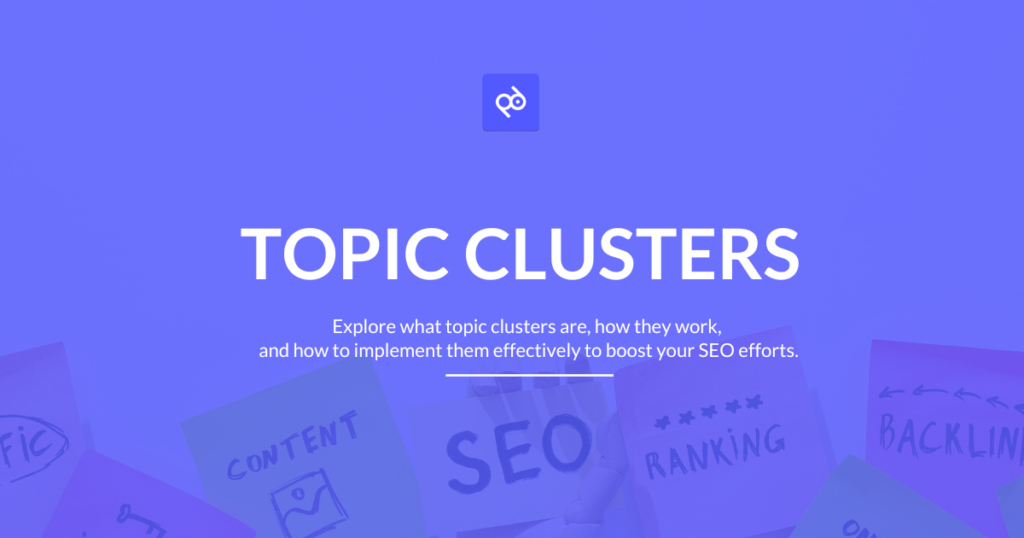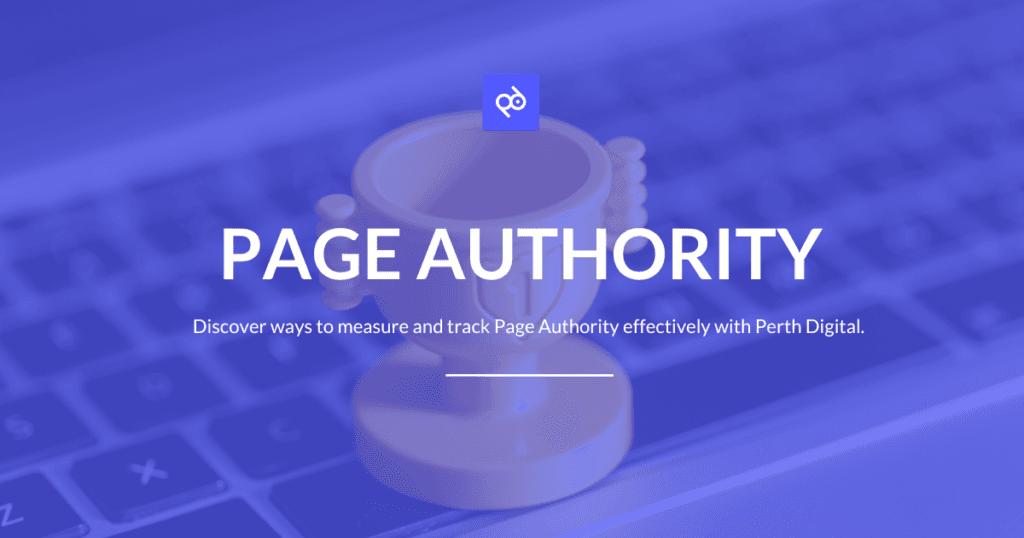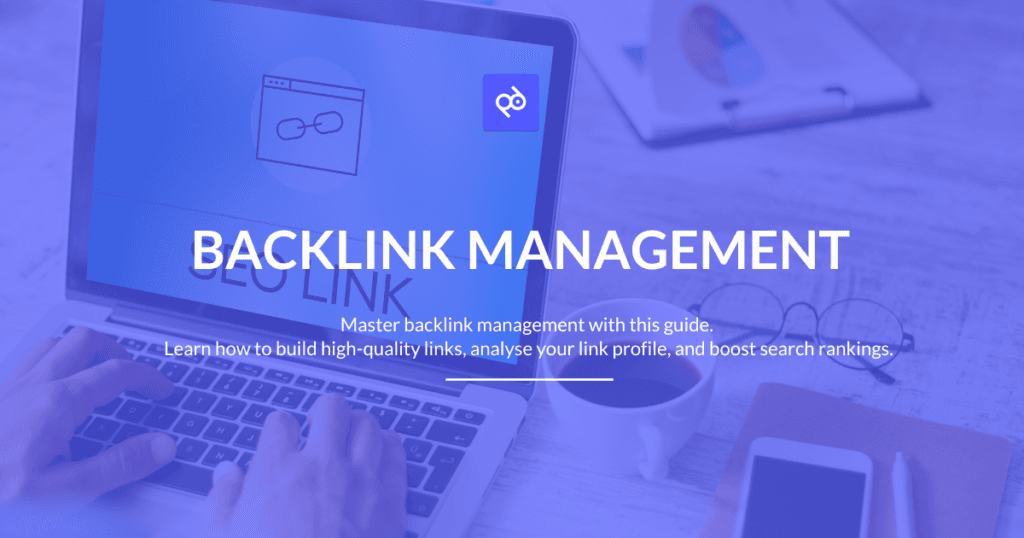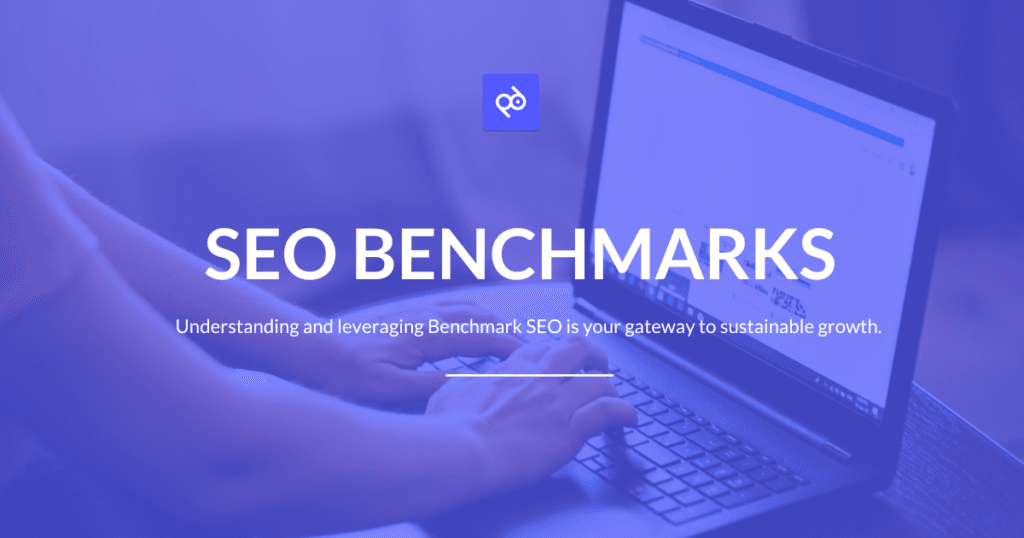SEO Topic Clusters: What Are They? How To Build Them?

If you’re looking to boost your website’s SEO and improve your content strategy, exploring the concept of topic clusters could be your game-changer. Topic clusters are an essential SEO strategy that can help organise your content, improve site structure, and enhance search engine rankings. By grouping related content together and linking it to a central pillar page, topic clusters not only make it easier for users to navigate your site, but they also signal to search engines that your content is comprehensive and authoritative. In this article, we’ll explore what topic clusters are, how they work, and how to implement them effectively to boost your SEO efforts. Key Takeaways Understanding Topic Clusters Topic clusters are an effective SEO strategy that enhances website structure and boosts online visibility. By organising related content into an interconnected web, you can demonstrate topic authority and improve user engagement. This approach involves creating a central pillar page with subtopics linked to it, ultimately aiding search engine understanding which then leads to your site having page authority. Definition and Purpose Topic clusters are groups of related content centred around a core subject. The central piece, called the pillar page, provides a broad overview and acts as an anchor for various subtopics. These subtopics delve into more specific areas of the main theme, linking back to the pillar page. This structure not only helps users find comprehensive information but also aids search engines in discerning the relationship between different pieces of content. By using topic clusters, you create a coherent site architecture, signalling expertise on the subject. This approach replaces traditional methods of targeting individual keywords, focusing on how content is interlinked and semantically related. Benefits of Topic Clusters for SEO Using topic clusters can significantly improve your SEO performance. When you organise content into a cluster, you make it easier for search engines to crawl and index your site. This structure can lead to higher rankings since the interconnected pages showcase a robust understanding of the subject. Moreover, topic clusters can enhance user experience. With everything linked to a pillar page, visitors can seamlessly navigate through interconnected subtopics, finding detailed information efficiently. This not only keeps users engaged but also increases the time spent on your site, positively impacting your SEO metrics. Incorporating topic clusters helps in establishing your site as an authoritative resource, attracting more traffic and potentially improving conversion rates. Building Effective Topic Clusters Building effective topic clusters involves strategic planning and structured content. Key elements include solid keyword research, grouping content methodically, and creating strong pillar pages. This approach enhances your site’s authority and improves search performance. Keyword Research Foundations Start by identifying the right keywords to build your content cluster. Focus on a mix of broad and specific terms. Broad keywords cover general topics, while specific ones address niche areas. Use tools like Google Keyword Planner to conduct niche keyword research and explore search volumes and competition. Identify gaps in existing content to ensure you create unique and relevant articles. Keywords should align with user intent, addressing what your audience is searching for. This alignment not only attracts visitors but also keeps them engaged. Incorporating long-tail keywords improves ranking opportunities. These are phrases of three or more words that are highly specific. Long-tail keywords help target niche segments and enhance your site’s visibility. Grouping Content into Clusters Organising content into clusters starts with a central theme, usually represented by a pillar page. Around this, group related articles or blog posts that go into detail. This structure helps search engines understand your site’s architecture and improves SEO. Each piece of content should interlink with others in the cluster. This creates a network of internal links, allowing users and search engines to navigate your site easily. Make sure these interlinks use keyword-rich anchor text for better ranking potential. When grouping content, think about user experience. Your clusters should answer related questions and provide comprehensive coverage of the topic. This approach ensures that visitors find all the information they need, which can lead to higher engagement and longer site visits. Creating Pillar Pages Pillar pages serve as the anchor for your topic clusters. They cover a topic broadly and link to detailed content. A well-crafted pillar page is essential for establishing authority on a subject. These pages act as a table of contents, guiding users to more specific articles. They should be comprehensive yet concise, providing a clear overview of the main topic. Include well-organised headings, bullet points, and visuals to enhance readability. Ensure pillar pages contain links to all relevant cluster content. This interlinking strengthens your site’s SEO by improving crawlability and helping search engines see your site as a hub of comprehensive information. Craft these pages thoughtfully to maintain relevance and authority. Content Strategy and User Experience Understanding both search intent and creating quality content are key elements for a successful content strategy. When you align your content with what users are looking for, you improve their experience on your site. Proper structuring keeps visitors engaged and can enhance their interaction with your content. Aligning with Search Intent and User Needs To make your content effective, start by focusing on search intent. This means crafting content that directly answers the questions your audience asks. Use tools to research common queries and topics within your niche. When your content matches user needs, it gains relevance, which can drive organic traffic and boost engagement. Understanding your audience’s preferences is crucial. This involves analysing behavioural data, such as time spent on a page and bounce rates. By tailoring content to these insights, you ensure that users find value in their visit, which enhances user satisfaction and increases the likelihood of return visits. Significance of Quality Content Quality content forms the cornerstone of effective content marketing. It should be informative, engaging, and accurate. Your content should not only answer user queries but also encourage interaction through comments or shares. This can enhance your website’s visibility and credibility. To create quality content, focus on thorough research and
Page Authority: Unlocking the Key to SEO Success

If you’re interested in boosting your website’s presence on search engines, understanding Page Authority (PA) is essential. Page Authority is a metric developed by Moz that indicates how likely a page is to rank in search engine results. The higher your page’s authority, the stronger its ability to appear higher in search results. This becomes a powerful tool in any SEO strategy. Optimising Page Authority involves several tactics, such as improving the quality and quantity of backlinks to your pages. Quality backlinks play a significant role in increasing the score, thus enhancing your site’s overall search performance. As you work on your SEO strategies, paying attention to various factors influencing PA can significantly benefit your website’s ranking. In this article from Perth Digital, you’ll discover ways to measure and track Page Authority effectively. You’ll also learn about common mistakes and how to avoid them, ensuring your efforts bring optimal results. Key Takeaways Understanding Page Authority Page Authority (PA) is a metric that helps determine how likely a web page is to rank well on search engine results pages. It is distinct from Domain Authority (DA), which assesses entire domains. Understanding these metrics is crucial for improving your website’s search performance. Fundamentals of Page Authority Page Authority, developed by Moz, is a score ranging from 1 to 100. Higher PA scores suggest a better chance of ranking higher on search engines. Moz calculates this by evaluating various factors, including link profiles, the quality of inbound links, and other signals that affect a page’s search visibility. It’s essential to note that PA is a comparative metric, meaning it is most useful for comparing different pages rather than assessing them in isolation. Factors influencing PA include link count, link quality, and additional page content metrics. Improving your PA score involves enhancing the quality and quantity of links to your page, ensuring high-quality content, and maintaining a robust site structure. Regularly checking PA can help you keep track of your page’s SEO health and make adjustments as necessary to boost performance. Page Authority vs Domain Authority While PA focuses on individual pages, Domain Authority is concerned with the entire domain or subdomain. DA scores also range from 1 to 100, with higher numbers indicating a stronger overall site authority. A high DA score suggests that the domain is trustworthy and has the potential to rank well across various pages. Both PA and DA are integral authority metrics, helping to gauge a site’s potential impact on search engine rankings. The key difference lies in the scope: PA evaluates a single page’s authority, whereas DA looks at the entire domain’s strength. By understanding both metrics, you can strategise effectively to improve your site’s search engine standing. Prioritising actions that enhance DA may involve broader site-wide practices, while increasing PA typically focuses on specific pages, their content, and quality links. Factors Influencing Page Authority Page Authority is influenced by several key elements. A solid link profile, effective on-page optimisation, and quality, relevant backlinks play crucial roles. Focusing on these areas can significantly boost your page’s ability to rank well in search engine results. Link Profile Essentials Your link profile is central to determining Page Authority. A strong profile consists of a diverse range of backlinks from reputable sources. It is important not only to acquire many links but to ensure they come from varied, high-quality domains. A diverse link profile indicates to search engines that your content is credible. This diversity includes links from sites with high authority and relevance to your content’s topic. Additionally, consider using internal linking strategies. Internal links help distribute page authority across your own site’s pages, enhancing their visibility. They also improve user navigation, keeping visitors engaged and potentially increasing time spent on your site – a valuable metric for SEO. On-Page Optimisation On-page optimisation directly impacts how search engines perceive your content. Pay attention to keyword usage, ensuring that they are relevant and naturally integrated. Meta tags, headers, and image alt texts should also be optimised to reflect the primary content theme. Content quality remains a top priority. Creating valuable, engaging, and original content encourages people to spend more time on your page. This reduces bounce rate, which is favourable for your page’s authority. Focusing on mobile responsiveness is crucial as well. With many users browsing on mobile devices, ensuring your site is mobile-friendly can significantly affect your SEO metrics. A fast loading speed further enhances user experience, leading to better engagement and higher authority scores. Backlink Quality and Relevance Backlinks are a vote of confidence from other websites. However, quality trumps quantity. Aim for backlinks from sites with high authority as these positively impact your page’s perceived authority by search engines like Google. The link’s relevance to your content is equally critical. Links from sites within your industry or niche carry more weight, as they signal context and topical relevance. This can be achieved by guest blogging or sharing valuable resources with industry leaders, encouraging them to link back. Tracking and analysing your backlinks regularly ensure they remain beneficial, allowing you to remove any low-quality links that might negatively impact your page authority. Improving Page Authority Boosting Page Authority involves several key strategies that can enhance your website’s ability to rank higher in search results. This includes building high-quality backlinks, effective content marketing, and following SEO best practices. Each area plays a crucial role in developing a stronger online presence. Strategies for Link Building Link building is central to improving Page Authority. The focus should be on acquiring high-quality backlinks from authoritative sites. These links serve as endorsements, helping search engines trust your page. Building relationships with influencers or partnering with reputable websites can be effective. Guest blogging and offering expert insights on popular platforms can also lead to valuable backlinks. It’s crucial to avoid spammy links, as they can harm your site’s reputation. Using tools for SEO Insights can help identify potential link opportunities. Analyse competitor backlinks to discover potential sites to target. Consistent monitoring of your link profile ensures
Backlink Management 101: A Beginner’s Guide

Backlinks are more than just links; they’re endorsements from other websites that significantly influence your search engine ranking. A strong backlink profile is essential for boosting your website’s authority, driving organic traffic, and enhancing your brand’s credibility. Effective backlink management is crucial for achieving these goals. This guide will equip you with the knowledge and tools to manage your website’s backlinks effectively. Let’s get started. What Is Backlink Management? Websites aren’t shy about linking to others; unfortunately, your site might end up with some unwanted company. Poor quality or irrelevant backlinks can seriously harm your site’s search engine optimization (SEO). These harmful links often originate from spammy or low-quality sources, such as broken or irrelevant pages. Backlink management is the process of controlling and improving these incoming links. Imagine running a blog about child psychology. If a gambling website is linked to you, it would damage your reputation and offer no SEO benefit. Worse still, search engines might view this as an attempt to manipulate their search results, leading to a manual penalty and a significant drop in rankings. Effective backlink management involves several key steps: These steps can protect your site’s reputation, improve your search engine rankings, and boost your overall online authority. Benefits of Effective Backlink Management A robust backlink management strategy drives organic traffic and improves search engine rankings. You can significantly enhance your website’s authority and visibility by cultivating a high-quality link profile. Each valuable backlink you acquire increases link equity, boosting your site’s overall performance. This translates to faster rankings for your target pages, helping you achieve your desired search engine positions more efficiently. To gain a competitive edge, it’s crucial to analyse your competitors’ backlink profiles to identify opportunities for improvement. By focusing on acquiring fewer, but higher quality backlinks, you can achieve better results with less effort. This strategic approach allows you to concentrate on building links to your most important evergreen content, such as bottom-of-the-funnel pages, and driving qualified leads. Essential Tools for Backlink Management With countless SEO tools available, choosing the right ones can be overwhelming. Here are some of our favourites for effective backlink management. 1. Ahrefs Ahrefs is a cornerstone of many successful backlink management and link-building campaigns. Its comprehensive suite of tools offers invaluable insights into competitor link profiles, keyword research, and SEO audits. 2. Outreach Building strong relationships is key to successful link-building. Custom-built outreach tools can be invaluable for identifying potential partners and streamlining the outreach process. You can focus your efforts on the most promising opportunities by filtering prospects based on specific criteria, such as industry or website authority. 3. Buzzstream Once you’ve identified potential link partners, Buzzstream can help you manage your outreach campaigns efficiently. From creating personalised email templates to tracking responses, this tool simplifies building relationships and securing backlinks. 4. Google’s Disavow Tool While building high-quality backlinks is essential, addressing harmful links that could negatively impact your site’s ranking is equally important. Google’s Disavow Tool allows you to inform search engines about links you want to disassociate from your website, helping to protect your site’s reputation. 5. Google Search Console Google Search Console is indispensable for monitoring your website’s performance and identifying potential link-related issues. This free tool provides valuable insights into search traffic, keyword rankings, and backlink data. You can optimise your content and improve the user experience by tracking broken links and analysing click-through rates. How to Choose the Right Backlink Management Tools Unlike other website metrics, Google doesn’t automatically provide updates on your backlink profile. To effectively manage your site’s link equity, you’ll need to regularly audit your backlink profile using tools like Moz or Google Search Console to identify and disavow harmful links. However, no single tool offers a complete picture, so careful selection is crucial. 1. Budgeting for Backlink Management Tools Before diving into tool selection, consider your budget. Free options like Google Search Console can provide valuable insights, but paid tools often offer more advanced features. If you’re starting, free tools are an excellent place to begin. Investing in premium tools might be worthwhile as your business grows and your link-building strategy matures. 2. User Friendliness and Ease of Use When choosing your initial tools, prioritise user-friendliness. Look for tools with intuitive interfaces and minimal learning curves. This will allow you to focus on analysing your link profile rather than struggling with the software. Google Search Console is a popular starting point for many due to its simplicity. As your expertise grows, you can explore more sophisticated options like Ahrefs, which offers in-depth analytics. 3. Research and Testing Jumping from one tool trial to another can be time-consuming. To accelerate your search, thoroughly research tools and read unbiased reviews. Comparing features and pricing is essential to finding the best fit for your needs. Following these guidelines and carefully considering your requirements, you can select the right backlink management tools to support your website’s growth and success. Final thought Backlink management is often overlooked as an SEO strategy, but its impact on search engine rankings, website traffic, and your bottom line cannot be understated. A strong link profile is essential for establishing your website as an authority in your industry. If you’re looking to boost your online visibility and drive more leads, Perth Digital SEO Service can help. Our expert team specialises in crafting effective backlink management and link-building campaigns tailored to your business goals. Contact us today to unlock your website’s full potential.
What Is A Pillar Page? How To Create Pillar Pages For SEO?

A pillar page is a powerful SEO strategy designed to organize and present content in a way that boosts search engine rankings and user experience. By creating a comprehensive, central hub of related content, pillar pages help search engines understand the structure of your website and improve its overall visibility. In this article, we’ll dive into what pillar pages are, their benefits, and how to create one that supports your SEO goals. Key Takeaways Understanding Pillar Pages and Topic Clusters Pillar pages and topic clusters are valuable elements in content strategy. They help in improving SEO through structured content. These elements can increase search engine ranking by creating a network of connected pages with strategic internal linking. The Role of Pillar Pages in SEO A pillar page serves as the foundation for a topic cluster strategy. It acts as a comprehensive guide to a broad subject. By covering a wide range of information, it establishes authority and provides a central hub for related content. This enhances your website’s visibility and relevance in search engines. Creating a robust pillar page involves quality content that answers key questions about the topic. Linking to related cluster content reinforces the core topic. This interconnected web of content ensures efficient navigation for both users and search engines, boosting your site’s SEO performance. Defining Topic Clusters Topic clusters are groups of related content centred around a core pillar page. They create a network where each article or page supports the main topic explored in the pillar page. Each cluster page delves into specific subtopics, providing detailed insights. This approach enhances user experience and SEO. Users find detailed information easily, while search engines appreciate the organised content structure. Internal links within the cluster strengthen the thematic connection, helping search engines understand the scope of your authority on specific topics. Interconnection of Pillar Pages and Cluster Content The interaction between pillar pages and cluster content is vital for an effective content strategy. The pillar page links to cluster pages that offer detailed information on related subtopics. This creates a web of internal links that help distribute authority across your site. By linking strategically, you guide users through a clear path of information. This setup not only increases user engagement but also improves your site’s search engine ranking. The well-organised structure signals to search engines that your content is thorough and authoritative on the subject. This interconnected strategy is key to an effective digital presence. Creating and Optimising Pillar Content Properly creating and optimising pillar content involves understanding the importance of keyword research, ensuring the content quality is high, and making effective use of internal linking. These aspects work together to make your pillar page a valuable resource. Strategies for Keyword Research Keyword research is crucial for creating an effective pillar page. Begin by identifying core topics relevant to your subject. Focus on finding a mix of high-traffic and long-tail keywords, which are specific phrases often less competitive. Organise these into clusters related to your main topic. This helps in planning your content structure and ensuring that it covers all necessary subtopics. Regularly review and update your keywords to stay current with search trends, enhancing the visibility of your pillar page. Importance of Content Quality and In-Depth Reporting Content quality is vital for engaging readers and establishing authority. To create a compelling pillar page, focus on in-depth reporting and providing comprehensive information on your subject. This often involves conducting thorough research and presenting it in a clear, organised manner. Ensure your content is unique, insightful, and free of errors. Visuals like charts and graphs can enhance your text and offer deeper insights. Additionally, keep your content up to date by regularly reviewing and refreshing it with new data or insights, maintaining its relevance and accuracy for your audience. Effective Internal Linking Strategies Internal linking enhances the usability and SEO of your pillar page. By linking related articles or pages, you create a topic cluster that strengthens your site’s structure and helps search engines understand the content hierarchy. Consider a strategy that involves linking both related subtopics and detailed pages back to the pillar page. Use descriptive anchor text to improve the user’s understanding of what they will find on the linked pages. This not only aids navigation but also boosts the SEO potential by highlighting relationships between content. Aim to balance the internal links to avoid clutter and ensure each link adds value to the reader’s experience. Improving Site Architecture for User Experience Creating a strong site architecture can significantly enhance user experience. By focusing on user navigation and content engagement, you can ensure that visitors find value in your website while reducing bounce rates. Enhancing User Navigation with Internal Links Internal links are essential in guiding users through your website. By connecting relevant pages, you help visitors find information quickly and efficiently. Think of it as creating a roadmap that directs users to the content they need. Organise your site with clear menus and easy-to-follow link paths. Use descriptive anchor text that accurately describes what users will find. This way, you make navigation intuitive and keep users engaged. A good internal linking strategy, like the pillar-cluster model, connects main topics to related content. It not only improves navigation but also supports SEO efforts, making your site more discoverable. Reducing Bounce Rates through Engaging Content Creating engaging content is key to reducing bounce rates, which occur when users leave your website after viewing only one page. To keep users on your site, ensure your content is compelling and relevant. Use a mix of text, images, and videos to capture attention. Well-structured content with headers, bullet points, and visuals can make information more digestible. This encourages users to explore more pages and spend additional time on your site. Moreover, ensure that your pillar pages, which act as comprehensive resources, are well-organised and easy to navigate. High-quality content that answers users’ questions or provides solutions will naturally entice them to stay longer and explore further. Advancing Authority and Trust with Backlinks Backlinks
SEO Benchmarks: Understanding Performance Metrics for Success

Search Engine Optimisation (SEO) benchmarking is key to improving your website’s performance. By using specific metrics, you can track your site’s progress in the competitive online landscape. SEO benchmarks, such as keyword rankings and organic traffic, give you a clear picture of how well your site is doing in search results. With this information, you can set realistic goals and strategies to enhance your visibility. Analysing these benchmarks helps you understand which areas require attention, like improving page load speed or increasing backlinks. Focusing on the right Key Performance Indicators (KPIs) can save time and resources while driving real results. Having a strong grasp of these benchmarks allows you to adapt to changes and stay ahead in your digital strategy. This article provides a comprehensive guide to mastering SEO benchmarking, brought to you by Perth Digital, to ensure you achieve the best results. Key Takeaways Understanding SEO Benchmarking SEO benchmarking is crucial for assessing your site’s performance against competitors. By focusing on key performance indicators (KPIs), you can better understand areas for improvement and track progress over time. Core Components of SEO Benchmarks To establish effective SEO benchmarks, start with key performance indicators (KPIs). These metrics help evaluate your site’s performance. Important KPIs include keyword rankings, organic traffic, and conversion rates. These are essential for determining how well your strategies are working. Keyword rankings indicate how your pages appear in search results. Tracking these can help you optimise content and improve visibility. Meanwhile, organic traffic measures the number of visitors reaching your site through search engines. High organic traffic often signals strong SEO performance. Finally, focus on conversion rates. This shows the percentage of site visitors taking a desired action, like making a purchase or signing up for a newsletter. Monitoring conversion rates helps assess how well your site meets user needs and encourages them to act. Importance of Establishing Baselines Setting a baseline is essential for effective SEO benchmarking. A baseline is your starting point, providing a reference to measure progress. It involves analysing current SEO performance, including keyword rankings, traffic levels, and user engagement. By establishing baselines, you can set realistic goals and identify areas needing improvement. Comparing future performance against these baselines helps determine if your strategies are successful or require adjustment. Regular evaluation of your SEO benchmarks ensures you remain competitive in your industry. By continuously measuring and refining your KPIs, you maintain focus on achieving your SEO objectives and improving overall performance. Analysing SEO Metrics and KPIs Understanding how SEO metrics and KPIs impact your website can drive better search engine performance. By focusing on key indicators like conversion rates, engagement rates, and domain authority, you can make informed decisions that lead to improved visibility and traffic. Key Performance Indicator (KPI) Analysis In SEO, KPIs are critical for measuring success. They include metrics like organic traffic, bounce rates, and click-through rates. These KPIs help you assess the effectiveness of your strategies. Higher click-through rates indicate that your pages are attracting clicks, while lower bounce rates suggest visitors find your content engaging. Monitoring these KPIs regularly provides insight into your website’s performance and highlights areas for improvement. Consistent tracking helps in crafting strategies for higher conversion rates. Utilising Google Analytics for SEO Insights Google Analytics is a powerful tool for gaining insights into SEO performance. It allows you to track average session duration, traffic sources, and user behaviour. By analysing these metrics, you can identify trends and optimise your content accordingly. Engagement rates can be measured to see how well visitors are interacting with your site. Setting up goals in Google Analytics helps track conversions and understand which strategies are most effective. This data-driven approach ensures your SEO efforts are aligned with user interests and business objectives. Improving Domain Authority Scores Domain authority (DA) is a ranking metric that predicts how well your website will perform in search engine results. A higher DA score indicates better SEO potential. To improve this, focus on building quality backlinks from reputable sites and ensuring your content is valuable and relevant. Increasing your domain authority involves regular content updates that align with user interests and maintaining a clean, easy-to-navigate website structure. Monitoring DA alongside other metrics gives a comprehensive view of your SEO health. Regularly addressing technical issues and enhancing user experience also contribute to a better DA score. Maximising Organic Search Traffic Increasing your website’s organic traffic involves understanding patterns and implementing effective strategies. By tracking key metrics and using proven techniques, you can boost visibility and engagement on search engines. Evaluating Organic Traffic Patterns To maximise organic search traffic, start by evaluating your organic traffic patterns. Track metrics like engaged sessions and average engagement time to understand how users interact with your content. Engaged sessions indicate how often users find your pages interesting enough to stay. An increased average engagement time signals that your content is relevant. Examining these metrics helps identify which pages are performing well and which need improvement. Compare your site’s performance with industry benchmarks to gauge where you stand in your field. This allows for a clearer view of potential areas for growth and improvement. Analysing how your site appears on SERPs (Search Engine Results Pages) is also crucial. Keep an eye on your search engine rankings, as higher ranks typically lead to better visibility and increased traffic. Identifying patterns in your data aids in making informed decisions for future strategies. Strategies for Boosting Organic Visibility To boost your visibility, use effective SEO techniques. Consider optimising your content for featured snippets, as these appear at the top of SERPs and can significantly increase clicks. Additionally, invest in keyword optimisation to ensure your content ranks well. Improving your site’s internal linking structure also helps. It supports search engines in better understanding and indexing your pages, which can enhance rankings. Engaging in thought leadership-based SEO can increase your influence within your industry by offering expert insights and valuable content. Stay updated on the latest SEO trends and adjust your strategies to maintain and improve your
Seed Keywords: Mastering the Foundation of SEO Success

Understanding seed keywords is crucial for anyone looking to improve their digital marketing efforts. These are the words and phrases that form the foundation of your SEO strategy. Using seed keywords effectively can drive targeted traffic to your site and boost your search engine rankings. They act as the starting point for developing more extensive keyword lists, helping you to connect with your audience more effectively. The process of selecting seed keywords involves identifying the main themes of your content and what potential customers might be searching for. This forms a crucial step in building an effective SEO strategy that improves visibility in search results. In the context of your overall digital marketing plan, optimising content with the right keywords enhances engagement and conversion rates. By integrating these keywords effectively, your content becomes more relevant to both search engines and users. Perth Digital focuses on helping you harness the power of keywords to elevate your content strategy. Key Takeaways Establishing Your Seed Keyword List Creating your seed keyword list involves pinpointing your core topics and using SEO tools to refine your selection. This approach helps lay a solid foundation that supports effective keyword research and better search engine optimisation. Identifying Core Topics To start, brainstorm key themes related to your industry or niche. Think about the main subjects or services you offer. These become your core topics. For instance, if you run a health blog, potential topics might include nutrition, exercise, or mental health. Once you’ve outlined these subjects, refine your list by considering what your audience might search for. Talking to your customers directly or reviewing feedback can provide insights. You want these core topics to genuinely reflect areas of interest and potential engagement. Use these topics to pinpoint primary keywords. For example, “mental health” could lead to “mental health tips” or “mental health support.” This method ensures that your list is not only comprehensive but also closely aligned with what users are actively seeking. Utilising SEO Tools With your core topics in hand, tools like Google Keyword Planner, SEMrush, and Ahrefs can help you expand your seed keyword list. These tools offer suggestions based on real user data, making your list more robust. Start by entering your core topics into a keyword explorer. This will generate related keywords and phrases. You’ll receive valuable metrics such as search volume and competition level, helping you to prioritise relevant keywords. Regularly update and refine your list to stay relevant. SEO tools also allow you to track evolving trends, ensuring your keywords are up-to-date with current market dynamics. This continuous process helps maintain the effectiveness of your SEO strategy. Diving into Keyword Research For effective keyword research, it’s crucial to consider search volume, relevance, and user intent. You should also think about expanding your keyword ideas to capture more targeted traffic. These aspects will help you craft a strong approach to SEO and content creation. Analysing Search Volume and Relevance When you start with keyword research, the first step is to assess search volume and relevance. Search volume indicates how many people are looking for a term. Select keywords with a high search volume to reach more people but ensure they fit your content goals. Relevance is equally important. A keyword must relate to your product or service. If you sell coffee online, for example, keywords like “coffee” or “espresso” are relevant. It’s not only about numbers; it’s about finding terms that resonate with your audience’s needs. Balancing high search volume with relevance can improve your visibility. Choosing well-fitted keywords helps to draw in users who are more likely to be interested in what you offer. Understanding User Intent User intent is the reason behind a search query. It’s essential to recognise if someone is looking for information, ready to buy, or comparing products. Knowing this helps you select the right keywords and tailor your content accordingly. Understanding intent divides into informational, navigational, transactional, or commercial. If a user searches for “how to make espresso,” it’s likely informational intent. On the other hand, “buy espresso machine” suggests transactional intent. Writing content that aligns with these intents increases engagement. Meeting the user’s expectations with relevant content helps you rank better in search results and increases the chances of conversions. Expanding Keyword Ideas Once you understand the basics, it’s time to broaden your keyword list. Begin by identifying seed keywords, then grow and explore variations. Use both short-tail keywords, which are one or two words, and long-tail keywords, which are phrases of three or more words. Long-tail keywords often have lower search volume but can be highly effective. They often convert better because they are more specific and closely match user intent. Tools like Ahrefs or Moz can assist in brainstorming and expanding your keyword ideas. Consider creating content that encompasses a wide range of keywords. This approach maximises your reach and helps in attracting a broader audience with varied interests and needs. Optimising for Search Engine Rankings To enhance your search engine rankings, you must understand keyword difficulty and conduct a thorough competitive analysis. This knowledge can help you select the right keywords and monitor your competitors’ strategies effectively. Keyword Difficulty and Competition Understanding keyword difficulty is key to optimising your content. Keyword difficulty measures how hard it will be to rank for specific terms. You should aim for keywords with manageable difficulty levels, balancing relevance and competition. Use tools like SEMrush or Ahrefs to analyse keyword difficulty scores. High difficulty keywords are often more competitive. Consider targeting long-tail keywords, which are generally less competitive yet highly actionable. These keywords can draw specific audiences who are more likely to convert, providing a strategic edge in the crowded digital space. Competitive Analysis for Keywords Competitive analysis involves studying your competitors’ keywords and strategies. This helps you uncover gaps in your own keyword strategy and leverage untapped opportunities. Start by identifying your top competitors. Look at the keywords they’re targeting and how they’re performing for those terms. Tools like SEMrush and Ahrefs offer insights